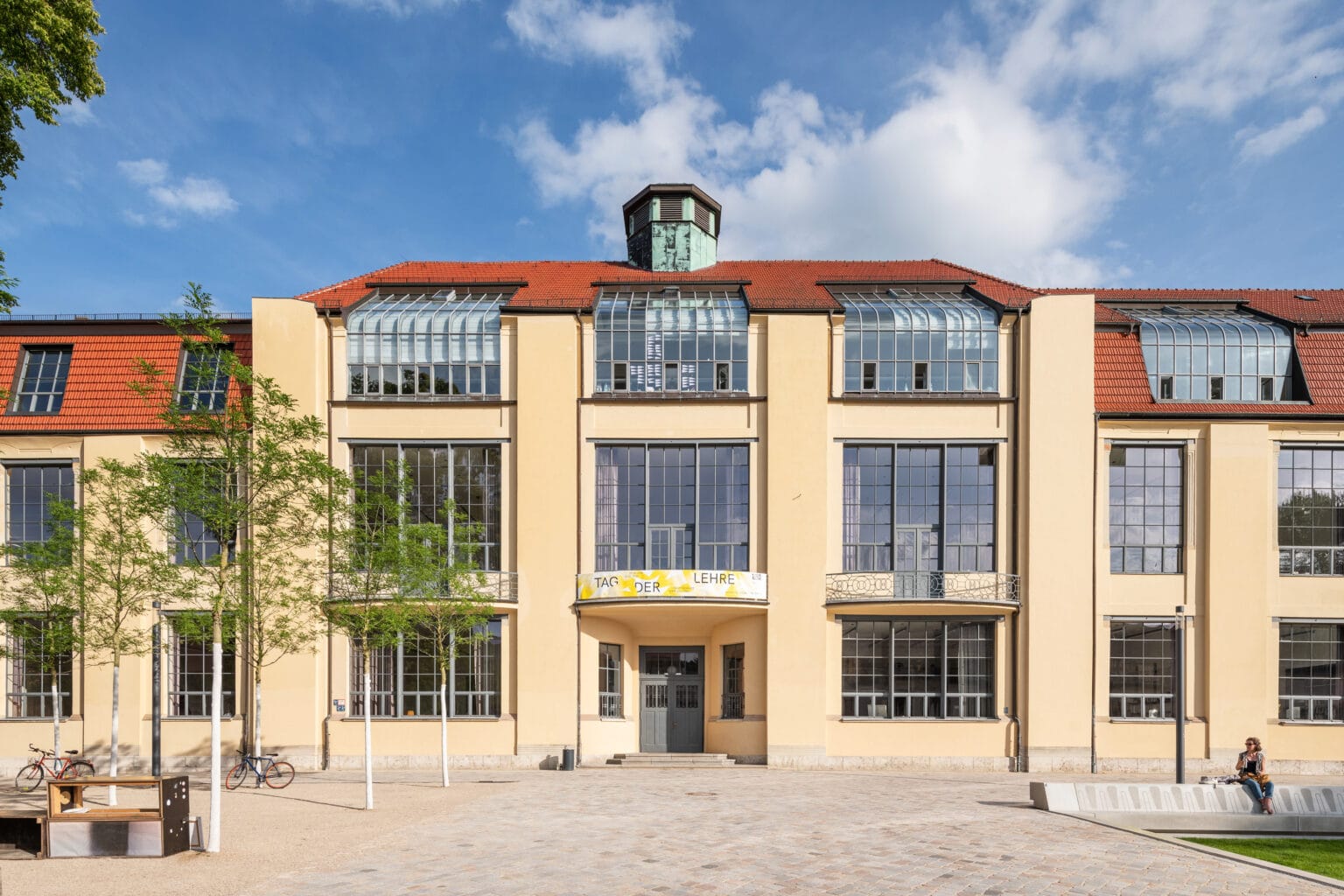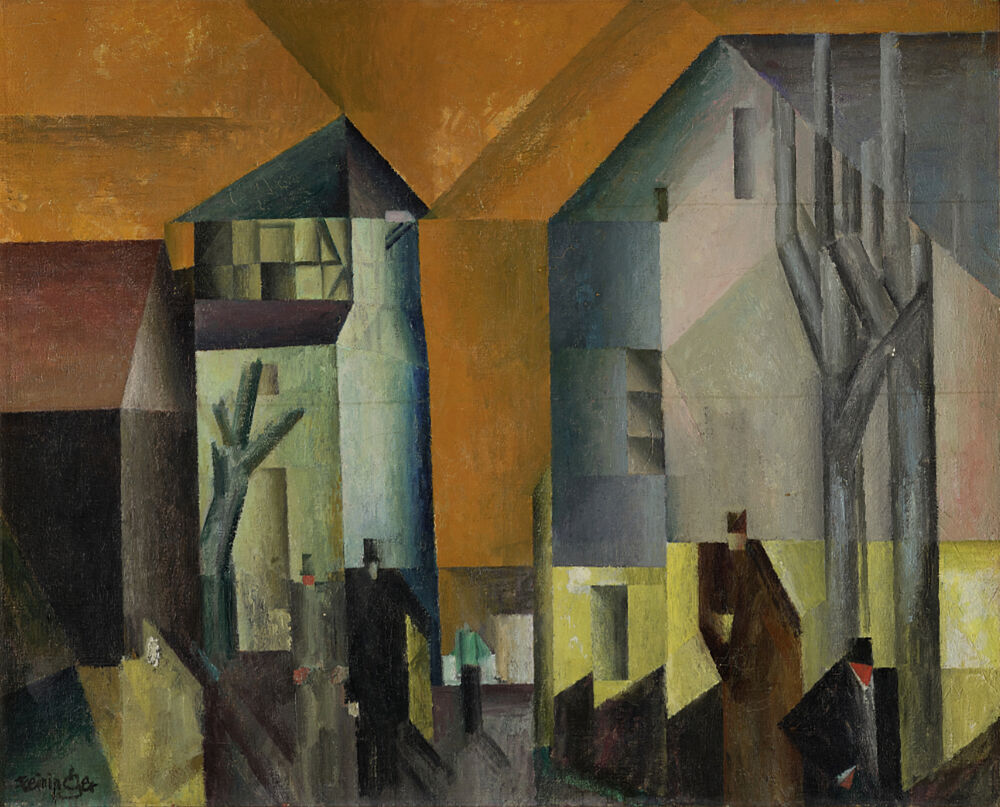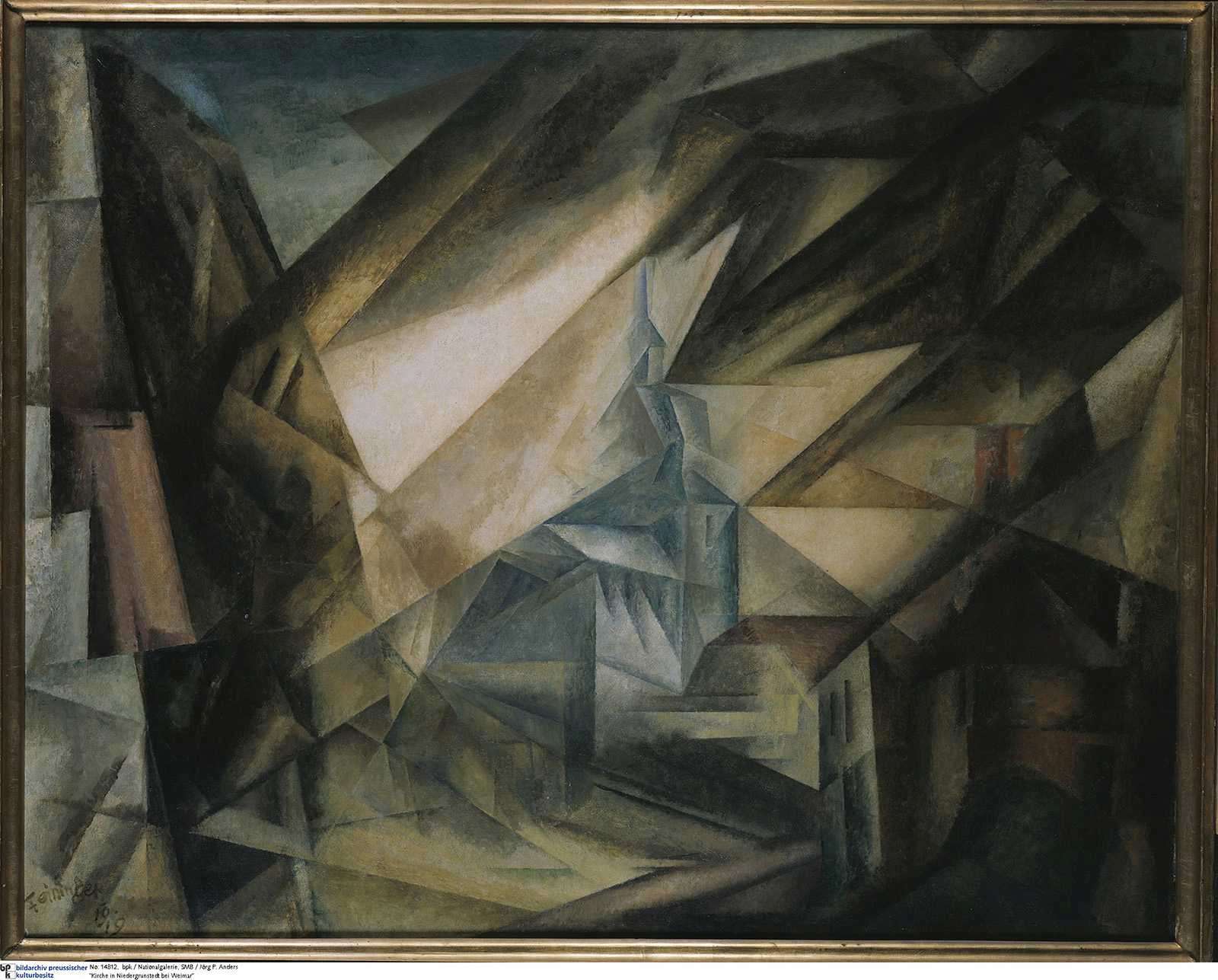LYONEL FEININGER covered distances of up to 60 kilometers on his bicycle. Today, the so-called Feininger Cultural Path runs through numerous towns south of Weimar and connects many of his famous themes over a distance of 30 kilometers. What can it tell us about this versatile artist?
At the age of 35, in 1906 Lyonel Feininger traveled to the Weimar region for the first time to visit his future wife, Julia Berg. At the time, she was studying Art at the Grand Ducal Saxon School of Art in Weimar, which is considered to have laid the foundations for today’s Bauhaus University in Weimar. Even before Feininger’s visit, Julia had described to him the small, picturesque villages, the medieval church towers, and hilly landscapes. For the native New Yorker, who moved to Germany at the age of 16, this corner of the world seems to have offered particularly appealing painterly themes. The young couple explored the area, initially on foot and later increasingly by bicycle.
The bicycle as we now know it first entered the market in the late 19th century and has since steadily gained in popularity. Its emergence as a popular means of transportation was witnessed by modern artists, who took it up as a subject. Among others, the technology-loving Futurists in Italy or Surrealists such as Marcel Duchamp were inspired by the bicycle. The bicycle also has a firm place in the oeuvre of avant-garde artist Lyonel Feininger, for example in his works “Die Velozipedisten” from 1910 and “ The Cyclists" from 1912. Both works convey the fascination with speed, mobility, and streamlined shapes that dominated the zeitgeist of the time.

Marcel Duchamp mit "Fahrrad-Rad ( Roue de Bicyclette)", Image via capovelo.com

On his bike, Feininger covered distances of up to 60 kilometers. Today, the so-called Feininger Cultural Path can be explored as a cycling route, by car or as part of a guided bus tour and runs through several villages south of Weimar. It was established in 1999 by Renate Böttcher, a contemporary of the Bauhaus artists, and across 30 kilometers connects scenes painted by the artist. These include the impressive village church of Niedergrunstedt or the compact church tower with its one timber-framed story of Vollersroda. Displays along the way show copies of Feininger’s paintings featuring local themes. However, he did not paint them on-site. He would initially create many drawings outdoors, his so-called “nature notes”, which he later elaborated on in the studio and which served as inspiration.
Starting point: The Bauhaus University
It is precisely here that the story told by the Feininger Cultural Path begins. The main building of the Bauhaus University south of the city center marks the starting point. In 1919, Feininger was appointed Creative Master at the newly founded Staatliches Bauhaus, which housed not only the printing workshop but also the studio of the great artist. Yet the Cultural Path leads us even deeper into Feininger’s past. Only a few minutes’ walk away, you can still discover the house where Julia Berg had lived 14 years earlier during her studies. After his first visit to the city, it was not long before Feininger moved into his studio in that very house, just one floor below his lover’s apartment, in 1906. In later years, he occasionally returned there in search of all those themes that (as the Cultural Path aptly shows) are still deeply embedded in the Weimar environment today.

Renate Böttcher auf der Feininger-Kulturroute, Image via weimar.de

Bauhaus-Universität Weimar, Image via takt-magazin.de
From Oberweimar via Mellingen and Vollersroda
The Cultural Path continues on via Oberweimar to Mellingen and Vollersroda. While his earliest drawings of Mellingen can be dated back to 1911, the future Bauhaus artist explored and drew Vollersroda as early as 1906 during his first stay in Weimar. The early sketches and oil paintings of these Thuringian villages reflect Feininger’s profession as a caricaturist particularly vividly. He captured the characteristics of Mellingen and Vollersroda and used them as backdrops for lanky, angular figures, such as those found in “Vollersroda I” from 1913, as well as in his many caricatures created up to 1914, with the sweeping, skilled hand of someone who had already been working for a wide variety of magazines since 1896-7.

Lyonel Feininger, Vollersroda I, 1913, Foto: Punctum/Bertram Kober, © VG Bild-Kunst, Bonn 2023, Image via museum-feininger.de
From Possendorf to the much-loved Gelmeroda
However, it is only two stops along the path later that we encounter the unsurpassed favorite theme of the great caricaturist and Bauhaus artist: The cycle path leads southwest of Weimar via Possendorf to Gelmeroda. Feininger had first seen the medieval church building of the Weimar district in 1906. On June 24 of the same year, he for the first time immortalized this inconspicuous church with the surprisingly high and pointed steeple that today serves as a highway church. In the decades to come, it would hold an enduring appeal for the artist. Feininger captured it in a total of 40 drawings and watercolors, countless sketches, an etching, a lithograph, and 14 woodcuts over the next 50 years. He also created ten large paintings, five of which will be on view at the SCHIRN from October 27. The curator of the upcoming Feininger retrospective, Dr. Ingrid Pfeiffer, is convinced that the Gelmeroda series, like no other in the artist’s oeuvre, allows conclusions to be drawn on his artistic practice and evolution. One can “virtually watch him think and compose”.
Even the early Gelmeroda paintings confirm this impression. Feininger’s “Gelmeroder Kirche” of 1910, with its fairy-tale setting and the angular, elongated figures populating the scene (much like the aforementioned depictions of Mellingen and Vollersroda), appears to have been created in the spirit of caricature. Only three years later, however, he painted “Gelmeroda II” and “Gelmeroda III” in a completely different way: During his stay in Paris in 1911, Feininger first encountered Cubist works in an exhibition at the Salon des Indépendants. They opened up a new approach to painting for him, which can be seen in the two oil paintings from 1913. Feininger deconstructed and reconstructed the scene into crystalline forms on his canvas, creating the impression of having viewed the church in a cracked mirror or photographed it from different angles at the same time.

Final stop: A home of his own in Weimar
Meanwhile, the artist discovered the church building that is holds the strongest place in terms of architectural history in the neighborhood of Gelmeroda. Niedergrunstedt is home to the village church of St. Mauritius, whose roots go back to the Romanesque period. Feininger, however, paid relatively little attention to it. Only one etching and five paintings are known of this church, including the “Kirche von Niedergrunstedt” from 1919. Unlike in “Gelmeroda II-III”, the Bauhaus artist applied Cubist principles much more radically here, making the church barely recognizable. It is almost as though the artist had wanted to make it disappear again straight away, even in the few works that exist featuring it.

Lyonel Feininger, Kirche von Niedergrunstedt, 1919, Image via kulturstiftung.de
From Niedergrunstedt, the Feininger Cultural Route leads back to the southwest of Weimar. There, our tracing of Feininger’s footsteps (and cycle trips) comes to an end in the private sphere: The former home of the Feininger family at Gutenbergstraße 16 still exists and now bears a memorial plaque commemorating its famous former occupant. Imagine Feininger stopping here after a long day of hiking or biking and reviewing the floodplain landscapes and church buildings in his mind’s eye. An invitation to do the same...
LYONEL FEININGER: RETROSPECTIVE
October 27, 2023 – February 18, 2024









